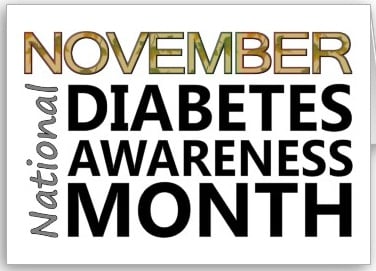There’s more to November than cold weather, family gatherings and good food. November is also American Diabetes Month, which is the perfect time of the year to spread awareness about how diabetes affects millions of people all over the world. While you may already know that diabetes complicates the regulation of blood sugar, not enough people understand that it also affects other areas of the body, including the eyes.
With more than 25 million diabetics in the U.S., advocating eye health awareness during American Diabetes Month is vital. Here are the top three optometric conditions that are common among people living with diabetes.
Retinopathy
Retinopathy occurs when small blood vessels connected to the retina are damaged, preventing the eye from sending a visual image to the brain. Retinopathy is one of the main causes of blindness-related conditions and is heavily prevalent among diabetics. The three types of retinopathy related to diabetes, include:
- **Macular edema
- **Proliferative retinopathy
- **Nonproliferative retinopathy
Left unattended, diabetic retinopathy can lead to permanent blindness. In fact, diabetics may increase their chances of developing diabetic retinopathy by delaying diagnosis and/or treatment.
Glaucoma
While anyone can develop glaucoma, particularly elderly individuals, the odds for diabetics to develop this eye condition is increased by 40 percent. Impaired vision and blindness related to glaucoma occur when ocular fluid levels, also known as aqueous humor, rise and place excessive pressure on blood vessels, damaging the retina and optic nerve. Glaucoma is a progressive condition, so the longer someone has it, the worse it becomes. Treatment methods may include medication or surgery, but early intervention is imperative to preventing its progression.
Cataracts
Did you know that nearly 23 million Americans over the age of 40 have cataracts? However, cataracts progress more rapidly in individuals living with diabetes. This condition develops when thickening occurs around the eye lens, causing subsequent clouding of vision. Surgically removing cataracts has a comparatively high-success rate in regards to diabetic eye-related conditions.
Get involved in American Diabetes Month and spread the good word. By learning and encouraging regular screening for diabetic eye care, you’re taking a proactive role in making diabetes more manageable. For more information about retinal imaging and diagnostic equipment that can detect these diabetic-related maladies, contact us at Optos, a global company working to improve optometric health worldwide.
Image Source: Diabetes Mine
